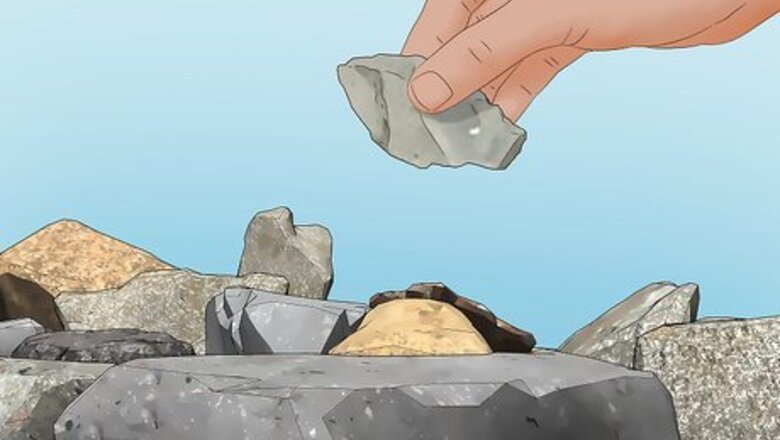
views
- People shaped stone tools by smashing them with other rocks. Check your stone for evidence of pecking, sanding, and flaking.
- Almost all stone tools have a striking platform (the surface where the stone is bashed), percussion scars on the edges, and ripples on the stone’s surface.
- Research other ancient stone tools to compare and contrast your rock with. When in doubt, get the opinion of an archaeologist or geologist.
Analyzing the Stone’s General Properties
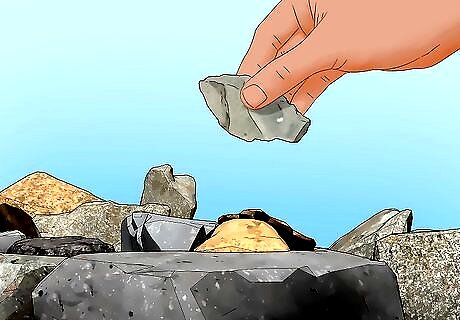
Check your stone’s location and material. The likelihood of a rock being a Stone Age tool depends heavily on where you found it and what substance the stone is made of. Almost all lithic stone tools were made of cryptocrystalline rocks (rocks with minute crystals). Identifying the rock as agate, chert, flint, radiolarite, chalcedony, obsidian, basalt, or quartzite can give you a major clue if it was used by prehistoric people. The best ways to identify a stone’s material are: looking at similar stones for comparison, calculating its density, holding it near a light source to check transparency, and checking its texture (lithic stone tools were often either waxy or rough).
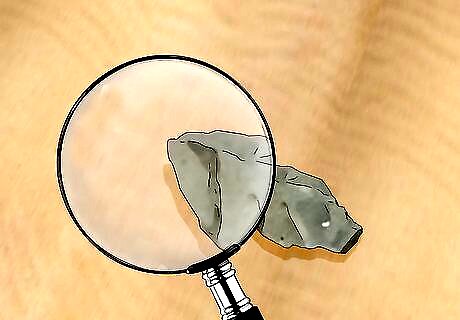
Search your stone for evidence of pecking, sanding, or knapping. Examine your rock for any evidence of manmade alteration. The most common way Stone Age humans shaped their stones was by knapping: striking coarse, flakey stones with blunter rocks to break off various edges. Knapped stones generally have sharp rims and thin, narrow flakes chipped off. Other shaping techniques included: Sanding: grinding a rough stone against a finer one to sharpen or polish it. Sanded stones often have smooth surfaces and well-shaped edges (sometimes straight, sometimes rounded). Pecking: using a rock like a chisel to hammer another stone into a more usable form. Pecked stones often have blunter edges and larger, chunkier flakes or scars.
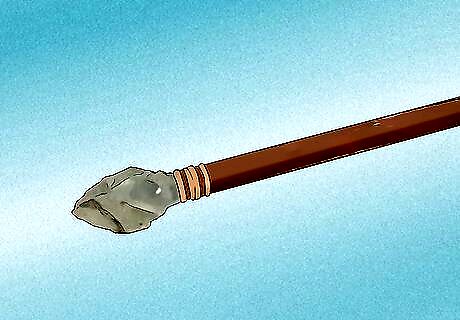
Examine the stone for clues on how it could have been used day-to-day. Look at your rock to determine not just if it was used, but how. For example, are its edges jagged to suggest the serrations of a knife? If so, it may have been used to cut into bone and flesh. If it has a stem, base, and sharp blade tip, it might have been made into a spear to capture animals during hunting. The various shapes for various flake tools were: On the stem: lanceolate, straight, contracting, expanding, side-notched, corner-notched, or basal-notched. On the base: straight, concave, or convex. On the blade: triangular, straight, incurvate, or excurved.
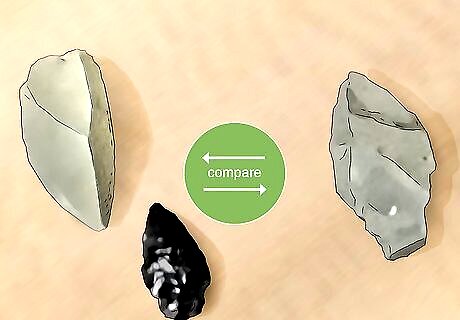
Research the area and similar tools to compare and contrast. Visit museums and Indigenous exhibits where they keep various Stone Age tools to see what real ones looked like firsthand. In addition, read up on the area you found your stone to see if there’s other evidence of human civilization there during the Lithic period. Experts have found other Stone Age devices in: Tanzania Kenya Eastern Europe Southeast Asia India Several Indigenous civilizations in North America also used stone tools to make knives and arrowheads. While these groups made their devices long after the Stone Age, you may still have a unique and historically-significant rock on your hand that’s 8000+ years old.
Examining the Stone’s Fractures
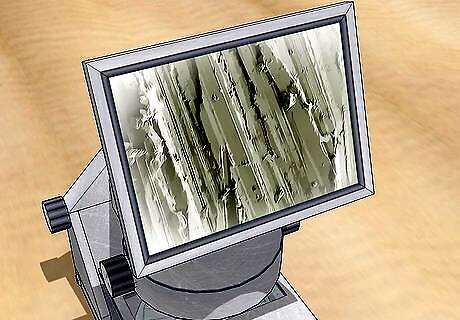
Look at the stone under a microscope for signs of manmade fracture. If you can’t see any evidence of manmade alteration with your naked eye, use a microscope (at 40x+ magnification) to examine your stone more closely. Look for sharp, broken edges (to suggest knapping and flaking) and a smoother more polished texture on the rock’s surface (to suggest sanding). However, not all broken stones were shaped manually. Know the signs of natural weathering that may have caused the fracture, too. These signs include: Thermal fracture: when a stone breaks as a result of regular heating and cooling in the nearby area, the break starts in the middle of the stone, often near an impurity, and the line of the break creates several concentric that radiate across the broken surface. Solifuxion: over time, the soil in the stone’s nearby area may move downslope, causing the rock to break with several parallel flakes across the surface; in addition, the edges may appear crushed and striated. Foundering: sometimes weathering may cause layers of lithic stones to erode, resulting in several parallel striations on the stone’s cortex (outer layers), and a few on the surface. Other internal forces: if the stone is broken by other internal forces (pressure over time, weathering), it will usually have a well-rounded surface and several small, curved flakes that appear too fine to break with natural percussion.
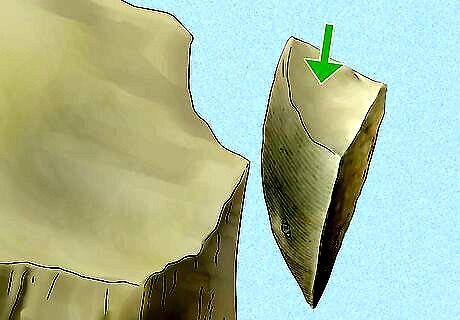
Try to find a striking platform on your stone. The striking platform is the surface of the rock where people may have struck the stone to detach its flakes. Usually, the striking platform is flatter and near the top or bottom of the rock. If your stone has a flat surface on either side where people could have logically hit it to create percussion, you may have a stone tool on your hands.
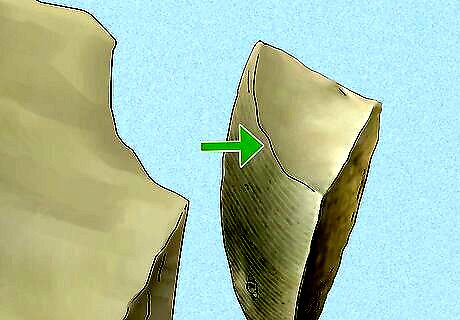
Locate a bulb of percussion. Once you’ve found the striking platform, check its edges to see where the rock may have been struck. Usually, there will be a small, fractured conic section where the rock was compressed from impact. Depending on how much force was applied, the bulb can be subtle or very pronounced.

Check for errailure scars and ripple marks under the bulb of percussion. When a stone flakes, concentric circles will usually spread out from the point of percussion (like ripples in a pond), in the direction the stone was hit. Sometimes, if the force was strong enough, it may even create an errailure (or subsidiary) flake on the rock. Check under the point of percussion for both of these marks. If you see either, there’s a good chance was altered by humans in some way.
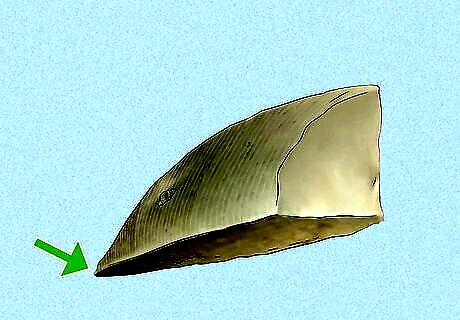
Look for evidence of distal termination. Distal termination refers to the point where the broken flake fell off the stone. Check your rock for points near the bulb of percussion where it seems smaller pieces may have been chipped off. Some distal points are sharp (feathered), some are rounded, and some are blunt (hinged). Regardless, of the texture, if there’s distal termination on your stone, it’s likely it was used as a tool during the Stone Age. Distal termination can tell us not only if a rock was manufactured, but how it was shaped. Sharp edges suggest traditional flaking while blunt edges point to evidence of pecking or hammering.
Testing the Stone
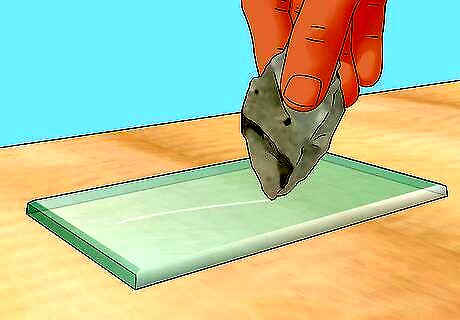
Test the hardness of the stone with glass. Ancient stone tools needed to be strong enough to pierce things like bone and flesh. Ensure your stone was hard enough to be a stone tool by scratching its sharpest edge against a glass object (like a bottle). If the rock is strong enough to scratch the glass, it was hard enough to be a lithic tool. Be careful when working with sharp stones and glass. Wear gloves in case either shatters to protect your hands from being cut.
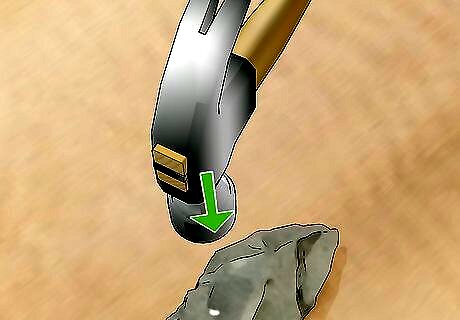
Strike the stone with a blunt object to see how easily it flakes. Odds are if the stone was shaped thousands of years ago, it can still be flaked pretty easily. Knap the stone with a heavy surface like a hammer or a larger stone and see if percussion easily chips it. If it does, you likely have a tool on your hands. Be careful when striking your stone. If it flakes, that means sharp rock pieces will be flying off it, so wear protective clothing like gloves and strike the rock as far away from you as possible.
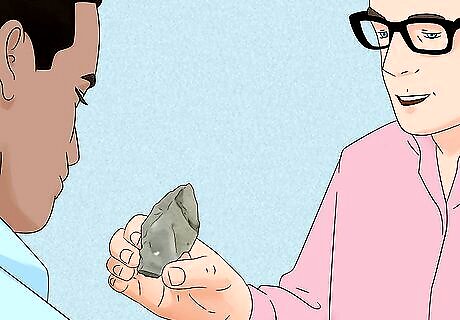
Take your stone to an expert to get their insight. There are a lot of complex factors that differentiate a regular rock from a stone tool. When in doubt, get an expert opinion. Contact the archaeology and/or geology department of your local college or see if these stones were shaped by manmade manufacture. Some cities also have archaeology firms that you can contact to identify artifacts. Check online to see where the nearest firm is in your area by simply googling “archaeology firm + [your city]”




















Comments
0 comment